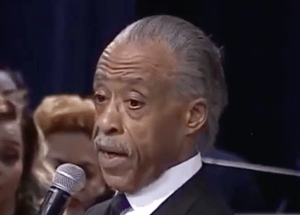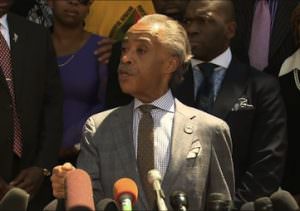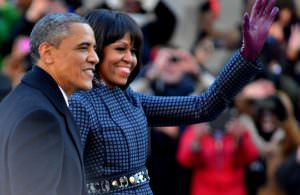The Million Hoodie March: It’s About a ‘Right-or-Wrong Thing’
In all, the Million Hoodie March was an on-the-ground call for an end and an online call for a new beginning.
Thousands of protesters gathered in New York City’s Union Square on Wednesday evening for the Million Hoodie March to demand justice and search for answers in the death of 17-year-old Florida teen Trayvon Martin. Martin was shot in the chest and killed in Sanford, Fla., on Feb. 26 because he looked “suspicious” to his alleged killer. It turns out that Martin was on his way to a family member’s home. After the killing, Martin’s body was tested for drugs and he was put through a thorough background check. The results yielded only a bag of Skittles and an AriZona Iced Tea. Meanwhile George Zimmerman, the man who admits shooting Martin, did not undergo any such scrutiny.
In the 26 days since the incident a fuller picture is emerging about Zimmerman. He is reported to have told police that he shot Martin in “self-defense.” Apparently Zimmerman felt he needed to use deadly force against the unarmed Martin because the teen was black. On the recording of Zimmerman’s call to 911 (which he made before pursuing the teen), he is heard using what sounds like a racial epithet and saying, “he’s a black male. … Something’s wrong with him. … These a**holes, they always get away.” What’s more, investigators missed a possible racist remark by Zimmerman as he spoke to police dispatchers just before the killing. To date, Zimmerman has not been charged or arrested in Martin’s shooting.
The failure to charge Zimmerman with any criminal wrongdoing has outraged members of the press as well as the public. For instance, the Rev. Al Sharpton and Lawrence O’Donnell are covering the case extensively for MSNBC and are demanding an investigation into the Sanford Police Department. The Sanford City Commission passed a motion of “no confidence” in its police chief at a meeting Wednesday after the investigation into Martin’s death. Rep. Frederica Wilson, D-Fla., called for justice by taking to the House floor with an impassioned plea.
Spurred to action by the media and government representatives, activist Daniel Maree took to organizing Wednesday’s Million Hoodie March and spreading the word about the petition, “Prosecute the Killer of Our Son, 17-year-old Trayvon Martin,” signed by 1 million people to demand justice for Martin.
The march began with a rally at Union Square where Martin’s parents reminded the crowd that their “son was not committing any crimes. Our son is your son. … It’s not about [a] black-and-white thing; it’s just about a right-and-wrong thing.” Using tactics developed through Occupy Wall Street protests to overcome New York City’s new ban on megaphones, the crowd responded using the human microphone. The crowd chanted “no justice, no peace, no racist police.” And with that the diverse groups of protesters grabbed their bags of Skittles, AriZona Iced Teas and began the Million Hoodie March going south on the streets of Manhattan.
Broadcast by independent journalist Tim Pool, it was plain to see that the march itself was rather peaceful, though there were a few confrontations and arrests. Tweets reported that the “#NYPD claim[ed] a package has been found at #UnionSq — cleared everybody including passengers. Terrorism card?”
Despite this interference, the leaderless march continued. And because it was leaderless, the march was very difficult for the NYPD to control. The three crowds diverged and converged several times, and there were moments of running, jumping and evading. Some protesters tore down the barricades surrounding the bull sculpture on Wall Street and climbed on it. But most of the crowd was walking through the fog and talking about how Trayvon Martin’s case is linked to institutional racism. And about how many are seeing the march as “Troy Davis 2.0,” as well as reminders of the tragic cases of Oscar Grant and Wendell Allen. Sometimes protesters shouted at the police and other times they chanted, “Stop stop and frisk!” Or, “Whose streets? Our streets!” Or, “Whose son? Our son!”
Meanwhile, Twitter exploded with poignant descriptions, opinions and photos. One of the most popular photos circulated was of former Michigan Gov. Jennifer Granholm sporting a black hoodie in support. Another popular image was of a group of Howard University law school students donning hoodies with the caption “Am I Suspicious?” And the most compelling photo was of a young black boy holding a sign that said, “Am I Next?” Two of the most popular opinions were “No Apologies” and “White People, You Will Never Look Suspicious!” Each called for every civilian, police officer and elected official to take responsibility for the society we’ve created that allows tragic events like Martin’s shooting to occur, though in very different ways. Soon after, online graffiti created for the march began to emerge and circulate to bring the point home.
In all, the Million Hoodie March was an on-the-ground call for an end and an online call for a new beginning. Protesters marched for an end to institutional racism and an end to injustice in this case and others. Their footsteps were echoed by the digital footprints of online protesters who typed and tweeted for a fresh start and a future in which no one will have to worry about being the next Trayvon Martin.
Click here to hear Dr. Dawkins talk about the Trayvon Martin case and the Million Hoodie March on KPFK’s “Truthdig Radio.”
Your support matters…Independent journalism is under threat and overshadowed by heavily funded mainstream media.
You can help level the playing field. Become a member.
Your tax-deductible contribution keeps us digging beneath the headlines to give you thought-provoking, investigative reporting and analysis that unearths what's really happening- without compromise.
Give today to support our courageous, independent journalists.





You need to be a supporter to comment.
There are currently no responses to this article.
Be the first to respond.